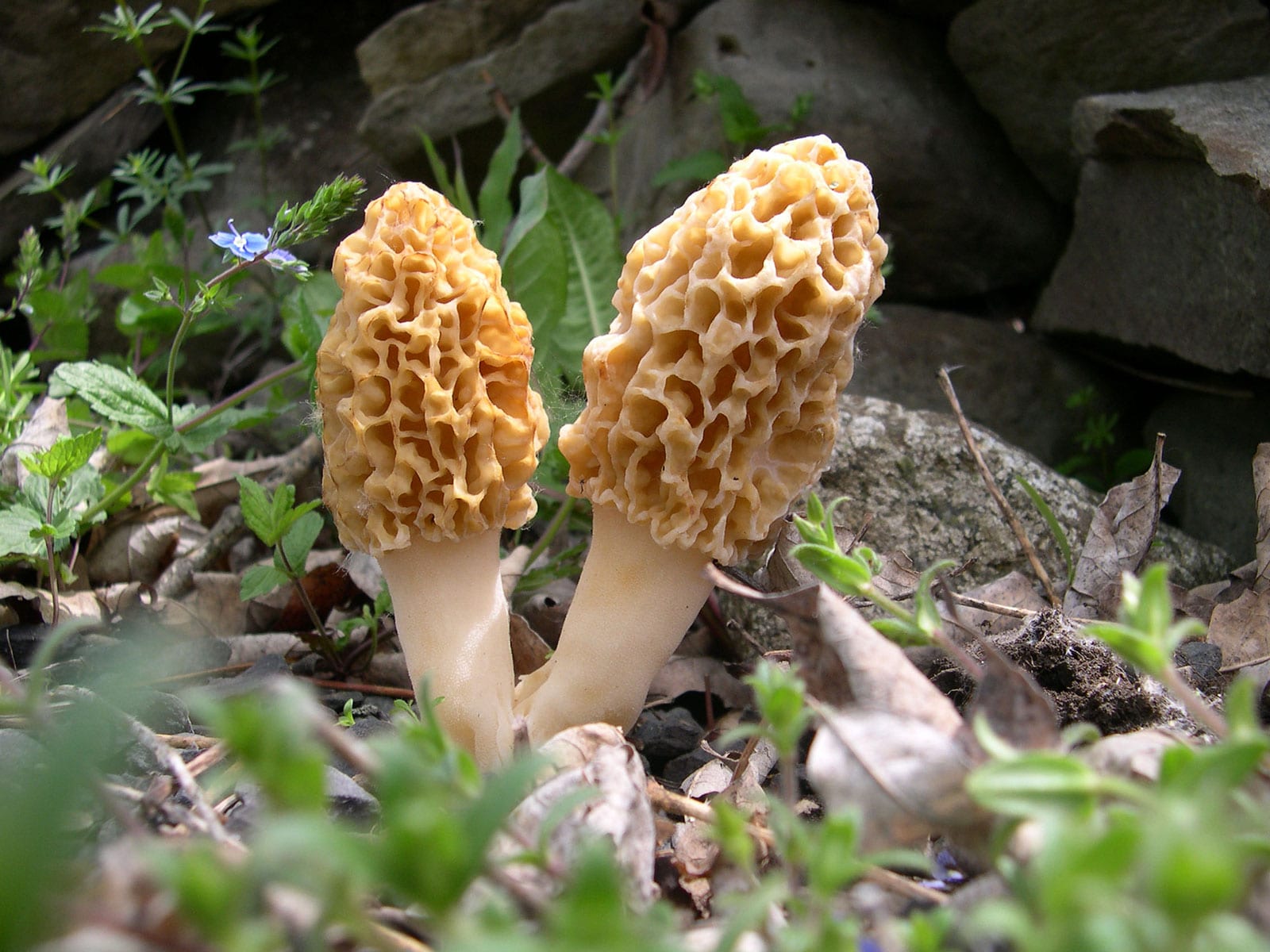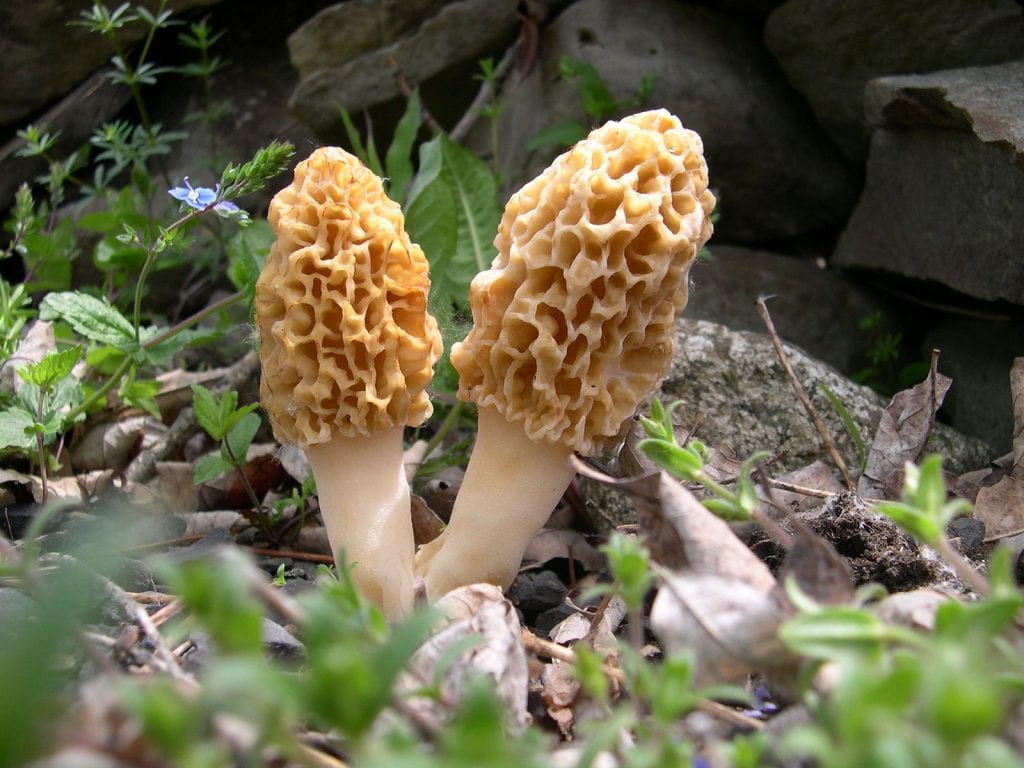Physical Address
304 North Cardinal St.
Dorchester Center, MA 02124
Physical Address
304 North Cardinal St.
Dorchester Center, MA 02124


The yellow morel mushroom, often called the common or true morel, is a widely sought and highly prized fungi find. Although they are the most common morels, like all others, their growing season is quite short and very dependent on weather conditions. There are five types of yellow morels and they can be quite hard to tell apart. Or, depending on where you live, it can be quite easy because there is only one possibility.
What Does a Yellow Morel Look Like?
The morel mushroom has what looks like a stubby looking white stem with an oddly-shaped tall conical or egg-shaped, honeycombed, cap. Upon closer inspection, the cap actually fits around the tall stem like a hat that has been pulled down all the way. Both the cap and stem are hollow, which creates a long uninterrupted hollow tube from the top to bottom of this mushroom. This is what sets the morel apart from potential look-a-likes. The caps attach to the stem at the lowest point and can easily be dislodged or disrupted if they are handled too much.
Morel mushrooms can be found growing individually, scattered over large areas, or growing in groups. If you see one, stop in your tracks and look around for more. It is likely there will be more than one even if they are spaced out.
It is difficult to get a spore print from a morel mushroom since its’ shape is so irregular. Their spores are either white, cream, or light yellow in color.
Depending on location and climate, morels can grow from March–May. In colder climates, they won’t start fruiting until early–mid May after it has rained significantly and the weather has been warm for a good period of time. They fruit around the same time every year and in the same places. When you find a morel growing spot, keep checking it every year.
The Five Yellow Morels
Morchella americana, also known M. esculentoides, is the most widespread of all morels in North America. It can be found from the east to the west coast, north and south, and everywhere in-between. It is larger than the other yellow morels and has a more egg-shaped, sometimes almost round, cap. The cap can be anywhere from 2.5-11 cm tall and 1.5-6 cm wide. The pits and ridges are randomly formed with the ridges ranging from white to pale yellow and the pits ranging from gray to dark brown. Because of the gray pits when it is young, this morel has often, mistakenly, been called a gray morel by foragers. As it matures, the ridges become yellowish-brown as do the pits. The stem is 2-12 cm tall and 1.5-10 cm wide with a swollen base. This morel can grow quite large if left undisturbed. M.americana grows in union with cottonwoods, ash trees, apple trees, and other hardwoods on the west coast. In areas east of the Rocky Mountains, it is commonly found under elm and ash trees, although it will grow under almost any kind of tree.
M.cryptica looks identical to M.americana and in the areas where it grows, it is impossible to tell them apart. Luckily, M.cryptica only grows in a limited area so for the majority of the country, this is not an issue. Around the Great Lakes, from central Illinois up to Ontario and down to western Pennsylvania, this species is common and is often found growing alongside its popular cousin. Not that a person can tell the difference. It grows under ash trees, apple trees, tulip trees, and other hardwoods. The cap ranges from 4-8 cm tall and 3-6 cm wide and the stem ranges from 5-13 cm tall and 1.5-6 cm wide and has a swollen base.
M.virginiana gets its name because it grows exclusively in the southeastern US. It seems to appear only around tulip trees. It likes drainage areas, riverbeds, coastal areas, and sandy soil. The cap is between 3-7 cm tall and 2-3.5 cm wide with pits and ridges that align vertically. The ridges are yellow when young with gray pits and brownish-yellow when mature with the same color pits. The stem is 2.5-6 cm tall and 1-2 cm wide and it often has a slightly swollen base.
M.diminutiva gets its name appropriately from its small size compared to other yellow morels. In fact, this is one of its most distinguishing features. It also has a shorter cap and longer, skinnier, stem as compared to the other yellow morels. It can be found east of the Great Plains and south of the Great Lakes around ash, hickory, oak, and tulip trees as well as other hardwoods. The cap is 2-4 cm tall and 1-3 cm wide with vertically aligned pits and ridges. When young, the ridges are yellowish and the pits are dark gray. As it ages, the ridges turn brownish-yellow as do the pits. The stem is 1-7 cm high and 0.5-1.5 wide.
M.prava appears in the northern US and southern Canada. It seems to prefer sandy soil around lakes and rivers and under pines and oaks. However, it has been found in a vast array of places and seems to be widely dispersed. The cap is 3-6 cm tall and 2-5 cm wide with randomly oriented ridges and pits. The ridges are light yellow or white when young and the pits are dark gray or black. As it ages, the ridges turn yellowish-brown as do the pits. This yellow morel often stays in the immature stage for an extended period and retains its gray pits. The stem is 2.5-4 cm tall and 1-3 cm wide and has a base that is slightly swollen.
Identifying yellow morel species can be quite the brain teaser, that is for sure. A lot depends on where you live and how many species grow in the area. That can narrow it down a lot. For others, just know that no matter which type you have discovered, they are all delicious and should be celebrated!